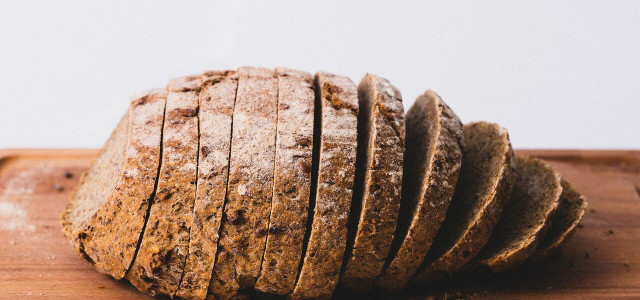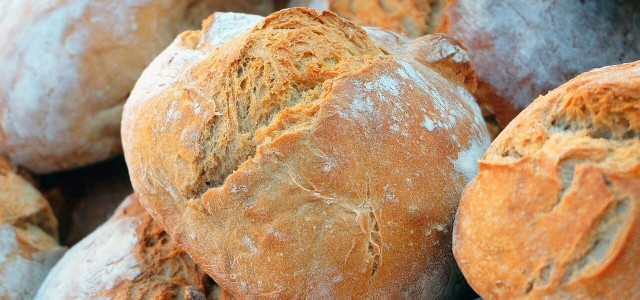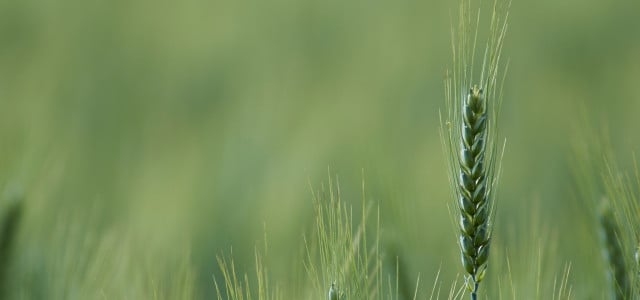You’re vegan and wondering whether you can eat bread? In many cases, the answer is yes. We’ll show you a couple common vegan bread brands, what to look out for when buying and how to make your own with a great vegan bread recipe.
Do vegans eat bread? In short: Yes, bread is typically vegan. However, this is no excuse not to take a closer look at ingredients labels. While certified vegan breads are the safest bet, there is more to consider.
In this article, we’ll introduce you to some of the most common types of vegan bread and give you some tips on scoping out the best vegan bread brands at the supermarket. For those at home in the kitchen, we’ve also included some vegan bread recipes to keep you busy.
Traditionally Non-Vegan Breads
Some common types of traditionally non-vegan bread to avoid are any breads made with honey (e.g. honey wheat), naan bread (made with eggs and milk), biscuits (produced using butter and milk) and crumpets (a milk product).
Any bread products which contain eggs, honey, royal jelly, gelatin, or dairy-based ingredients (i.e. milk, butter, buttermilk, whey, or casein) aren’t vegan. Another easy way to help tell vegan from non-vegan is by the degree of processing involved in production. Less processed foods are more likely to be vegan.
Of course, the recipes for those types of breads can be adjusted and ingredients can be swapped out for vegan ones.
Which Kind of Bread Is Vegan?
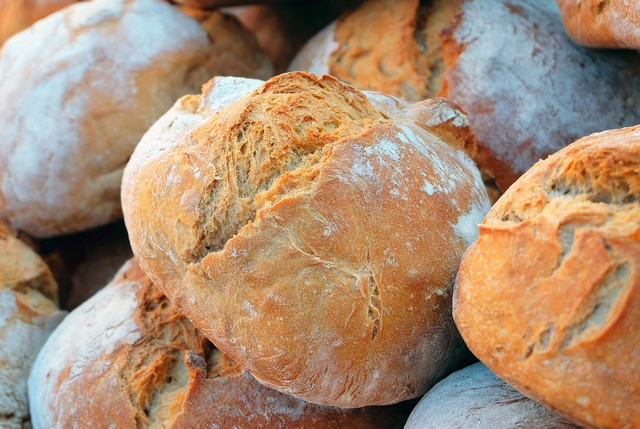


In its most basic form, a (naturally vegan) bread recipe is made up of flour, water, salt and yeast. Yeast is a natural ingredient added to help bread rise and as a member of the fungi family, yeast is vegan. In addition, manufacturers often add some of the non-vegan ingredients mentioned above (such as milk or honey) as sweeteners, or fats in order to modify flavor and texture.
Utopia’s tip: How to Make Yeast: Preparing and Propagating Wild Yeast
Many types of flatbreads, savory and dry types of bread tend to be vegan. Here’s a list of some commonly vegan breads you’re probably already familiar with:
- Sourdough
- Pita
- Ezekiel
- Baguette
- Focaccia
- Ciabatte
- Mexican flour tortillas
- Western Asian lavash flatbread
3 Popular Brands of Bread That Vegans Can Eat
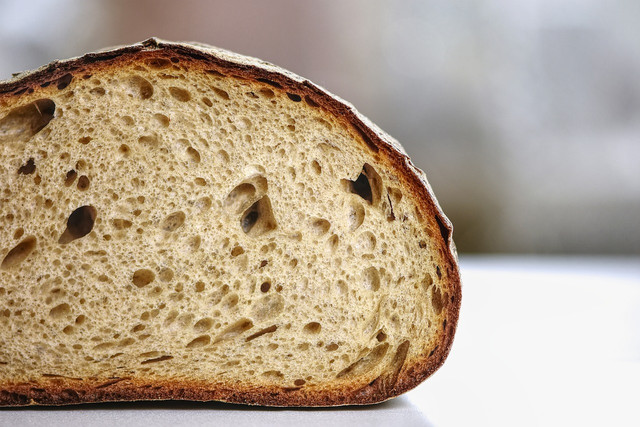


On your next grocery run, be sure to keep your eyes out for food labels such as the Certified Vegan Logo on your favorite bread products. Take things one step further by only buying USDA Organic and enjoy sustainably produced breads from seed to slice.
PETA has compiled their own list of vegan baked goods by brand which include an array of tasty flatbreads all the way to English muffins. Here are some reputable vegan bread brands you should know about:
- Arnold Bread advertises simple recipes with “no added nonsense”. Their vegan bread selection includes potato and oatmeal bread as well as keto, whole grain or rye. They also offer vegan sandwich thins and burger buns and rolls.
- Bloomfield Farms is a 100 percent gluten-free company also known for their vegan sandwich bread.
- Thomas’ Bagels allows you to add breakfast bagels to your list of vegan bread brand. From pumpkin spice and blueberry to onion and whole grain bagels — you’ll find something that suits your breakfast preferences.
Vegan Bread Recipe: How to Make a Tasty Fennel and Coriander Herb Bread
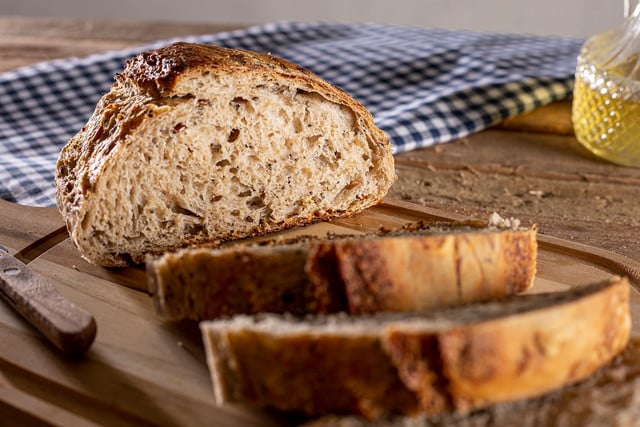


For this tasty vegan bread recipe, you’ll need the following:
Ingredients
- 1 oz fresh yeast
- 1 tsp sugar (find out if sugar is vegan, and if brown sugar is vegan, first)
- 1/2 tsp fennel pollen spice (or ground fennel seeds)
- 1 tsp coriander seeds
- 1 1/2 cups wholewheat flour
- 1 2/5 cup wheat bran
- 2 1/2 rye wholemeal
- 1 3/4 vegan margarine (soft)
- 3 tbsp vegan molasses
- 2 tbsp wine vinegar
- 1 1/2 tsp salt
Instructions
- Crumble the yeast and dissolve it together with the sugar in five tablespoons of lukewarm water. Leave the mixture to stand for ten minutes.
- Crush the fennel pollen/ground fennel seeds and coriander seeds with a mortar.
- Grease a bread pan (12 inches wide) with some margarine and then dust it with some flour.
- Combine the flour, bran and wholemeal in a large bowl and mix the ingredients well.
- Now add the margarine (in pieces), molasses, salt, vinegar, the fennel and coriander mixture and finally the yeast mixture, as well as one cup of lukewarm water.
- Mix the ingredients with the dough hooks on your hand mixer. Then knead the dough with your hands once again.
- Form an oblong loaf from the dough and put it into the greased bread pan. Slightly scratch the surface of the dough with a sharp knife.
- Leave the dough to rise covered in a warm place for about an hour. The volume of the dough should approximately double.
- Now place the bread in the oven at 320 °F /160 °C with circulating air. To ensure the dough doesn’t get too dry, you can put a cup of water on the bottom of the oven.
- Let your vegan bread bake for around 45 to 50 minutes. Once finished, remove from the pan and let it cool down completely on a cake rack.
For an extra quick recipe, give spelt bread a try: Simple and Quick 1 Hour Prep Vegan Spelt Bread Recipe
Other (Not So) Vegan Foods
With ingredients’ lists seemingly getting longer and longer every year, it can be hard to know which foods are vegan and which aren’t. Some foods might be traditionally vegan so that there is rarely a label on the packaging that specifies whether it still is or not, like with commercial bread varieties. Other foods are traditionally plant-based, but their modernized production processes render them non-vegan — as is the case for some sugars, for example.
Check out our list of common foods that raise the question of whether they’re vegan, or just plant-based, or neither — and let us answer it for you:
- Are French Fries Vegan? Here’s Why Not [2022]
- Is Imitation Crab Vegan? No, But There Are Alternatives
- Is Vanilla Extract Vegan — And Is It Sustainable?
- Is Nutella Vegan? The Question We’ve All Been Asking
- Is Alcohol Vegan? A Guide to Vegan Booze
- Is Dark Chocolate Vegan? What You Need to Watch Out For
Read more:
- Going Vegan: 5 Simple Steps Towards a Vegan Diet
- Plant-Based Diets for Beginners: A Helpful Overview
- What Does Veganism Mean and Is the Diet for You?
Do you like this post?






